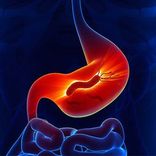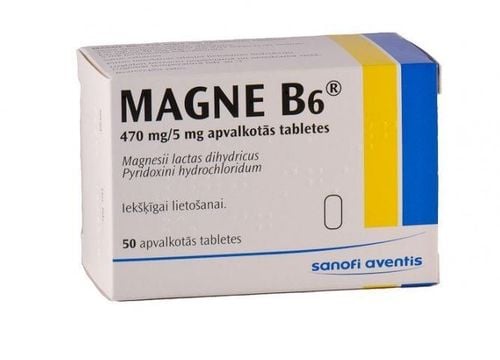Cotrim 960 is a combination antibiotic containing Sulfamethoxazole and Trimethoprim. This medication has a broad antibacterial spectrum, making it widely used in the treatment of various infectious diseases, including those affecting the gastrointestinal tract, respiratory system, and urinary tract. Learn more about the uses and precautions of Cotrim 960 in the article below.
1. Uses of Cotrim 960
1.1. Indications for Cotrim 960
Cotrim 960 contains the active ingredients Sulfamethoxazole and Trimethoprim in a ratio of 800 mg to 160 mg, respectively. It is indicated for the treatment of the following conditions:
- Urinary tract infections: Includes prostatitis, uncomplicated acute urinary tract infections, and recurrent or chronic urinary tract infections.
- Acute respiratory infections: Treatment of acute exacerbations of chronic bronchitis.
- Gastrointestinal infections: Traveler’s diarrhea, Shigella infections.
- Acute otitis media.
- Cholera: Used in patients contraindicated for tetracycline or infected with Vibrio cholerae resistant to tetracycline.
- Pneumocystis jiroveci pneumonia (PCP): Treatment and prophylaxis of this type of pneumonia.
- Toxoplasmosis prevention and treatment of Nocardiosis infections.
1.2. Pharmacodynamics
The combination of Sulfamethoxazole and Trimethoprim in a 5:1 ratio provides broad-spectrum antibacterial effects. The drug works by inhibiting the enzymes involved in folic acid metabolism. Sulfamethoxazole inhibits the formation of tetrahydrofolic acid from dihydrofolic acid by inhibiting dihydrofolate reductase. By suppressing the synthesis of tetrahydrofolic acid, the active form of folic acid, the medication inhibits bacterial thymidine synthesis.
1.3. Pharmacokinetics
Cotrim 960 is rapidly and well absorbed through the gastrointestinal tract. After oral administration of a single dose containing 800 mg Sulfamethoxazole and 160 mg Trimethoprim, peak plasma concentrations are achieved in 1–4 hours: 40–60 mcg/mL for Sulfamethoxazole and approximately 1–2 mcg/mL for Trimethoprim.
The drug is widely distributed into tissues and bodily fluids, including aqueous humor, saliva, prostatic fluid, middle ear fluid, bile, cerebrospinal fluid, vaginal fluid, and pulmonary secretions. Trimethoprim has a higher volume of distribution than Sulfamethoxazole.
Protein binding: Approximately 70% for Sulfamethoxazole and 44% for Trimethoprim. The drug crosses the placenta and is excreted in breast milk.
Metabolism: Cotrim 960 is metabolized primarily in the liver. Half-Life: 8–11 hours for Trimethoprim and 10–13 hours for Sulfamethoxazole in adults with normal renal function.
Excretion: About 50–60% of the Trimethoprim dose and 45–79% of the Sulfamethoxazole dose are excreted in urine within 24 hours.
2. Dosage of Cotrim 960
Cotrim 960 should be taken with meals to reduce the risk of gastrointestinal disturbances. Dosages depend on the patient and the condition being treated:
For adults:
- Urinary tract infections:
- Uncomplicated acute infections: 1 tablet every 12 hours for 10 days, or a single dose of 2 tablets once daily for 3–7 days.
- Chronic or recurrent infections: 1 tablet every 12 hours for 10–14 days.
- Prostatitis: 1 tablet every 12 hours for 3–6 months.
- Respiratory infections:
- Acute exacerbations of chronic bronchitis caused by Haemophilus influenzae or Streptococcus pneumoniae: 1 tablet every 12 hours for 10–14 days.
- Gastrointestinal infections:
- Shigella: 1 tablet every 12 hours for 3–5 days.
- Traveler’s diarrhea: 1 tablet every 12 hours for 3–5 days.
- Acute otitis media: 1 tablet every 12 hours for 10 days.
- Cholera: 1 tablet twice daily for 3 days (combined with rehydration therapy).
- Pneumocystis jiroveci pneumonia (PCP): 120 mg/kg/day (100 mg
- Sulfamethoxazole and 20 mg Trimethoprim), divided into 2–4 doses, for 14–21 days.
- Prophylaxis of primary and secondary Pneumocystis carinii pneumonia (PCP) in adults and adolescents with HIV: 1 tablet once daily for 3 consecutive days.
- Nocardiosis and Toxoplasmosis: 1 tablet daily for 14–21 days.
For Children
Dosage: 40 mg Sulfamethoxazole/kg and 8 mg Trimethoprim/kg daily, divided into two doses 12 hours apart.
For patients with renal impairment
Dosage adjustments are based on creatinine clearance (CC):
- CC > 30 mL/min: Regular dosage.
- CC 15–30 mL/min: Half the standard dosage.
- CC < 15 mL/min: Not recommended.
3. Side Effects of Cotrim 960
Common side effects may include:
- Gastrointestinal symptoms: Anorexia, nausea, vomiting, and diarrhea.
- Hypersensitivity reactions:
- Common: Rash, itching, photosensitivity, erythema, exfoliative dermatitis, fever.
- Severe: Stevens-Johnson syndrome, toxic epidermal necrolysis.
- Other: Systemic lupus erythematosus, dermatitis exacerbation.
- Renal toxicity: Tubular necrosis, interstitial nephritis, hematuria, lower back pain, oliguria, dysuria.
- Hematologic disorders: Aplastic anemia, agranulocytosis, leukopenia, thrombocytopenia, eosinophilia.
- Hepatic dysfunction: Cholestatic jaundice, elevated liver enzymes, hemolytic anemia, methemoglobinemia.
4. Precautions When Using Cotrim 960
4.1. Contraindications
- Hypersensitivity to Trimethoprim, Sulfamethoxazole, or any ingredient in the drug.
- Severe liver impairment.
- Patients with severe renal impairment: When kidney function cannot be managed or when creatinine clearance (CC) is less than 15 mL/min.
- Folate deficiency anemia.
- Pregnancy and breastfeeding.
- Children under 2 months of age.
4.2. Warnings
Use with caution in patients with renal impairment, those at risk of folate deficiency (including alcoholics, elderly patients, individuals undergoing anticonvulsant therapy, individuals with malnutrition, or those with malabsorption syndromes), as well as patients with asthma, severe allergies, or glucose-6-phosphate dehydrogenase (G-6-PD) deficiency.
Patients taking Co-trimoxazole should drink plenty of water to reduce the risk of urinary crystallization and kidney stones. Long-term treatment requires regular monitoring of blood counts, kidney function tests, and urinalysis.
Use with caution in older adults due to increased sensitivity to the side effects of the drug.
Co-trimoxazole crosses the placenta and can interfere with folic acid metabolism. It is contraindicated in pregnant women.
The drug is secreted into breast milk. Either discontinue breastfeeding or discontinue the use of Co-trimoxazole while breastfeeding.
Co-trimoxazole may cause dizziness, tinnitus, drowsiness, insomnia, or hallucinations. Patients must ensure they are not affected by the drug before driving or operating machinery.
5. Drug Interactions
- Warfarin: Concurrent use of Co-trimoxazole may prolong coagulation time in patients on warfarin therapy, as it inhibits the clearance of warfarin metabolites.
- Phenytoin: Cotrim 960 inhibits the metabolism of phenytoin.
- Methotrexate: Sulfonamides compete with methotrexate for protein binding, increasing free methotrexate levels.
- Cyclosporine: Co-administration with Cotrim 960 may cause nephrotoxicity.
- Digoxin: Serum levels of digoxin may increase when used concurrently with Cotrim 960 (this interaction is more likely in elderly patients).
- Indomethacin: Plasma concentrations of indomethacin may increase when co-administered with Cotrim 960.
- Pyrimethamine: Megaloblastic anemia has been reported in patients treated with Co-trimoxazole and pyrimethamine at doses exceeding 25 mg per week.
- Antidepressants: The effectiveness of antidepressants may be reduced when used alongside Cotrim 960.
- Amantadine: Concurrent use with Co-trimoxazole has been associated with reports of toxic delirium.
Please dial HOTLINE for more information or register for an appointment HERE. Download MyVinmec app to make appointments faster and to manage your bookings easily.













